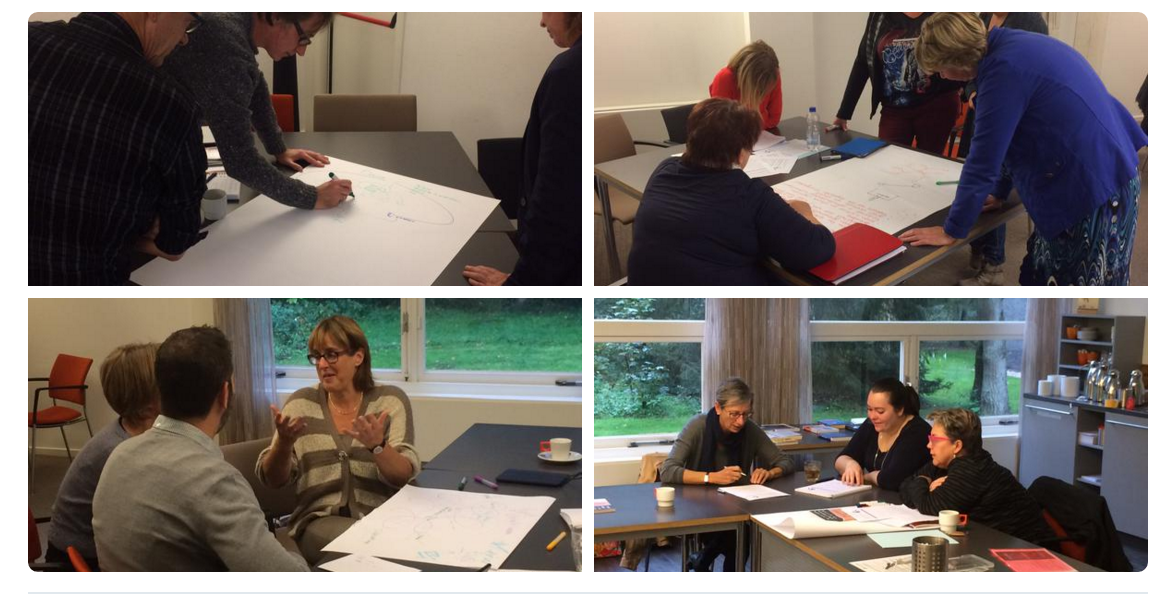- Diversity in activities (videos, texts, quiz, face-to-face methods) will allow more people to learn in their preferred styles. This makes it attractive to participate.
- Stimulating people to work in different ways makes sure that learning is solid (think of the brain principles).
- By making the programme interactive and more geared to actual practice we want to have more impact on practice.
Getting started with three design models
After thinking about the added value and an introduction to blended learning we went into sub- groups to redesign using three different models (3P's Jukebox, SamR see video below). This worked very well. I had not asked who the original owner of this training was and from the interaction I could not detect who was the lead of this training. The models invite everyone to become a designer in a new way and really made it a creative process. It was remarkable that people without much explanation, just a handout about the model could work intuitively. Furthermore, a different model really stimulated a different design.
Using the three creative designs, we started looking for the similarities between the designs but also the unique ideas that impress the other groups. A similarity was that everyone proposed an online start. The three training days were brought back to 1.5 or 2 days, with online activities in between. It became clear that everyone used online to activate learners. A number of face-to-face elements such as an informal lunch with management was considered very important to keep as a face-to-face element. Truly innovative was the idea to steer away from instruction and ask people for feedback instead of educating them. This called was the "teach-back".
How did the models help? The 3P model definitely helped to surface these kind of ideas. I think the Jukebox model stimulated that group to think about a mentor-buddy system. This was the point where I correctly identified the owners of this training - because of ownership of how things have been done. However, this lead to an extensive discussion and comparison of activities with the original plan, all ideas were scrutinized in detail by the team. The discussions led to a reformulation of the goals. The original formulation was knowledge- oriented, currently the focus is more on networking and knowing who to ask questions. Another innovation was thinking about a cohort group helping each other beyond the course. I think that the models helped everyone to think more out of the box.
Challenges
Facilitating online raised a number of challenges which still need to tackled by the team. The first is the inclusion of management and subject matter experts in this new way of training. A second one is choosing a suitable platform. There are some platforms in the organization available but not a clear LMS. This will be the next step for this team - discussions in the organization and in search of the right tool.


